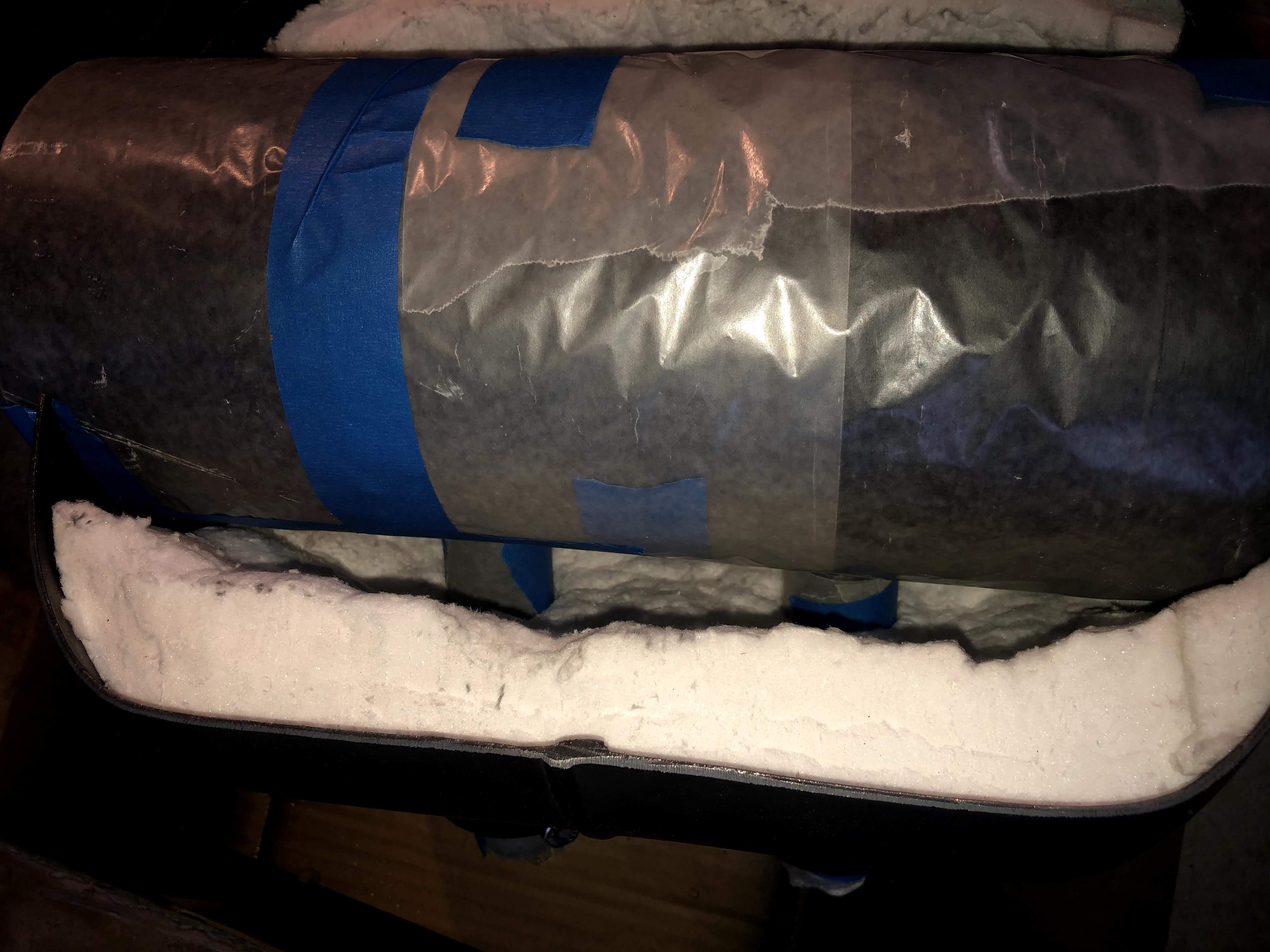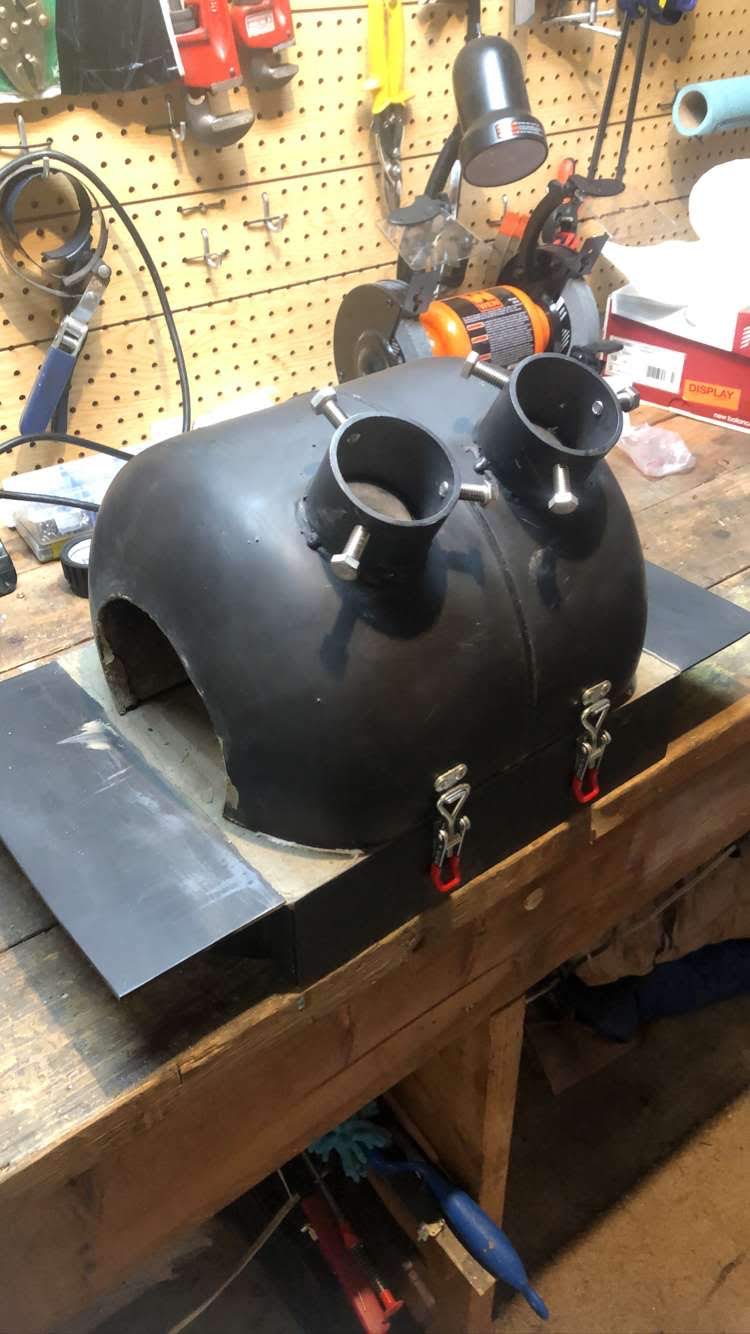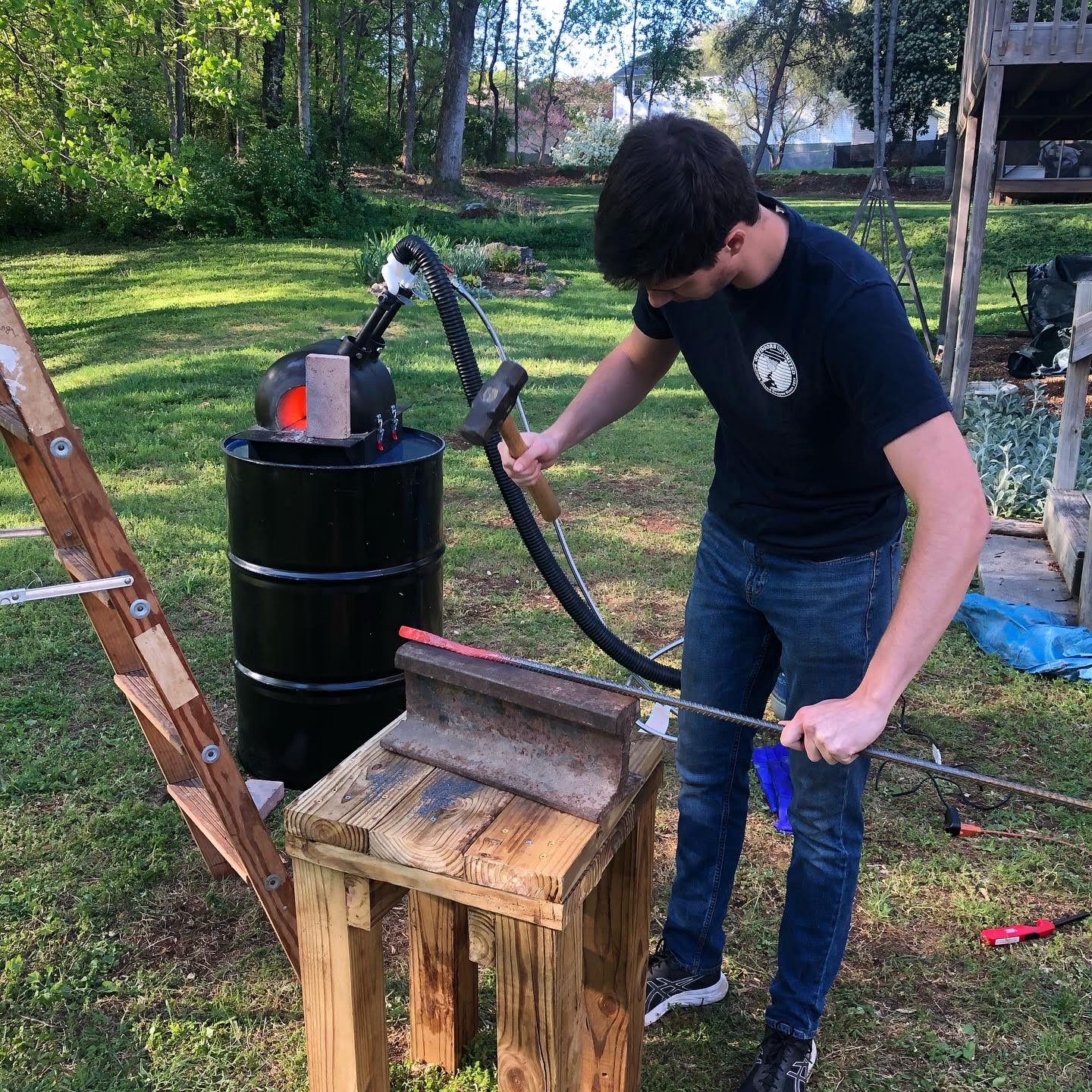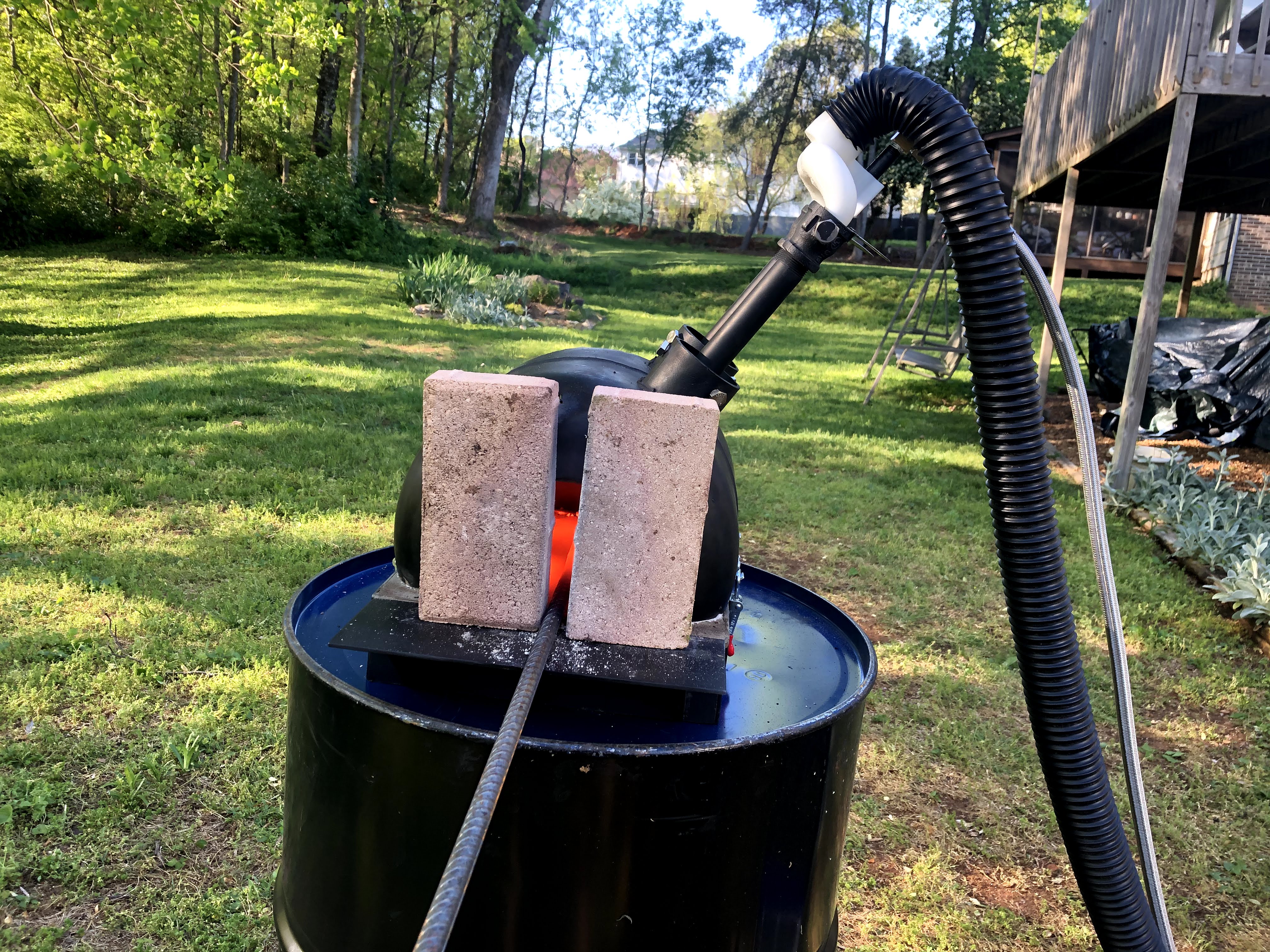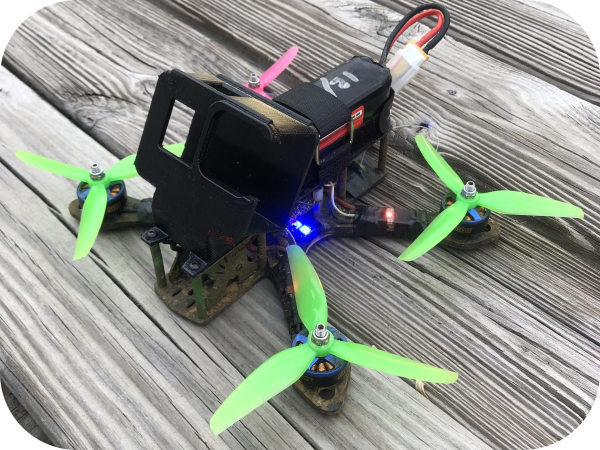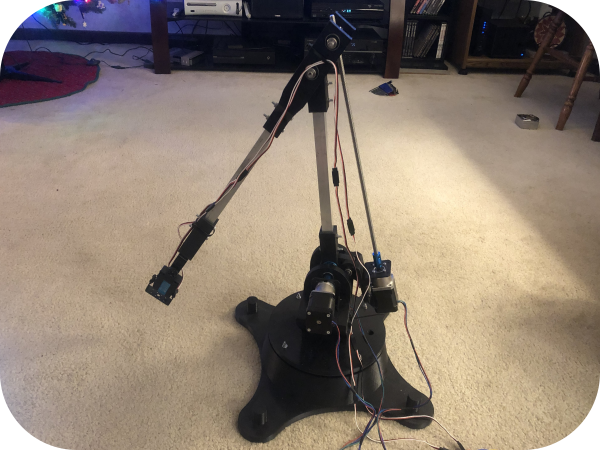Forced Air Propane Forge
Over the spring and early summer of 2020, I continued my project of building a forge. The final design of the forge was partly inspired by other home-made forges I have seen. I used aspects of other forges that I liked and designed my forge to fit my specific needs. I wanted to use as many recycled materials for the main body of the forge as possible for multiple reasons. It would keep the cost of materials down and make the build simpler. So, the central aspect of my design was to use an old 20 pound propane tank as the main body of the forge. I cut a third off of the tank so that the work pieces would later have a large flat face to rest on inside the forge. I also cut holes the same size of the forge area at the front and back. Using the tank in this way allows me to have a medium sized forge volume, a large surface to rest parts on, and openings at the front and back. Having both openings was important to me so that I am not limited in part length. I used scrap steel to weld a three inch tray for the propane tank to sit on. The tray also has shelves at the openings to hold firebricks that contain heat within the forge. Holes were cut in the tank and short rings welded to the openings. I drilled and tapped bolt holes in the rings. This created a mount on the tank to screw in the burner. I primed and painted the components in high temperature paint. To contain the heat, I filled the tray and propane tank with two inches of ceramic fiber wool and one inch of high temperature refractory cement. I formed the internal shape of the forge by 3D printing molds for the main forge volume and tunnels for the burner. By wrapping these printed parts in wax paper, the cement did not stick to the mold while setting, and the mold was easy to remove. I finally added latches to both halves of the forge so that the top and bottom could easily seperate for transportation if needed. To get a hotter and cleaner burn I added a blower to the forge by 3D printing pipes to route air to the burner.
Gallery


